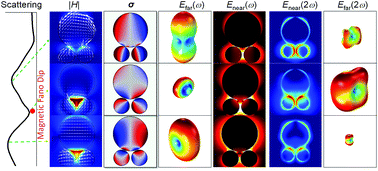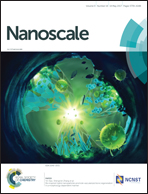Magnetic Fano resonance-induced second-harmonic generation enhancement in plasmonic metamolecule rings†
Abstract
The “artificial magnetic” resonance in plasmonic metamolecules extends the potential application of magnetic resonance from terahertz to optical frequency bypassing the problem of magnetic response saturation by replacing the conduction current with the ring displacement current. So far, the magnetic Fano resonance-induced nonlinearity enhancement in plasmonic metamolecule rings has not been reported. Here, we use the magnetic Fano resonance to enhance second-harmonic generation (SHG) in plasmonic metamolecule rings. In the spectra of the plasmonic metamolecule, an obvious Fano dip appears in the scattering cross section, while the dip does not appear in the absorption cross section. It indicates that at the Fano dip the radiative losses are suppressed, while the optical absorption efficiency is at a high level. The largely enhanced SHG signal is observed as the excitation wavelength is adjusted at the magnetic Fano dip of the plasmonic metamolecule rings with stable and tunable magnetic responses. We also compare the magnetic Fano dip with the electric case to show its advantages in enhancing the fundamental and second harmonic responses. Our research provides a new thought for enhancing optical nonlinear processes by magnetic modes.



 Please wait while we load your content...
Please wait while we load your content...